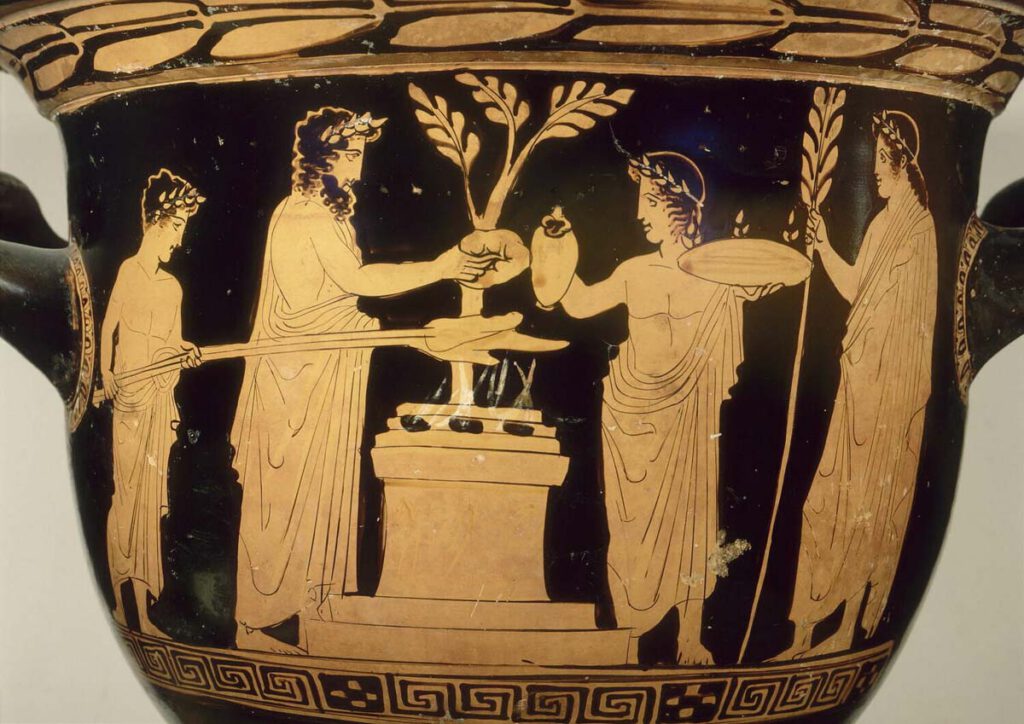Red-figured terracotta krater

Red-figured terracotta bell-krater – Vessel for mixing wine and water, late 5th century BCE, with four figures and altar smoking with knisa. The boy on the left is holding skewered splanchna and roasting them on the fire. These would produce a complex odour profile including meaty, fatty and smokey odours. A man to the right […]
Compounds in the environment following removal of animal guts

Odour-contributing compound Precursor in the body (a) Oct-1-en-3 one Fatty acids (b) Skatole Tryptophan (c) Ammonia Urea (d) Putrescine Ornithine (e) Cadaverine Lysine (f) Furfural(g) HMF Glucose (h) 2,5-Dimethylpyrazine(i) 2-Acetylpyridine GlycineAlanine Compounds in the environment following removal of animal guts – Compounds in the environment following removal of animal guts that contribute to perception of […]
Red-figured terracotta bell-krater

Red-figured terracotta bell-krater – Vessel for mixing wine and water, attributed to the Nikias Painter, late 5th century BCE, with three youths preparing meat offering, altar stacked with burning wood and smoking with knisa. Attendants on either side carry skewers likely holding viscera. The viscera would release putrescine and cadaverine, whose scent is characterised as […]
Red-figured terracotta stamnos

Red-figured terracotta stamnos – Vessel for storing liquids, attributed to the Eucharides Painter, early 5th century BCE, with two figures preparing a bull for sacrifice. When slaughtered, iron ions derived from the haemoglobin in the animal’s blood would interact with fats and oils to form volatile aldehydes and ketones, like Oct-1-en-3-one, typical sources for the […]
Black-figured terracotta column-krater

Black-figured terracotta column-krater – Vessel for mixing wine and water, late 5th century BCE, with men sacrificing a goat to a terminal figure of the god Hermes. The sacrificial victim has been dismembered and a part is being held in the flame on the altar. The entrails resting on the small table would release odorants […]
